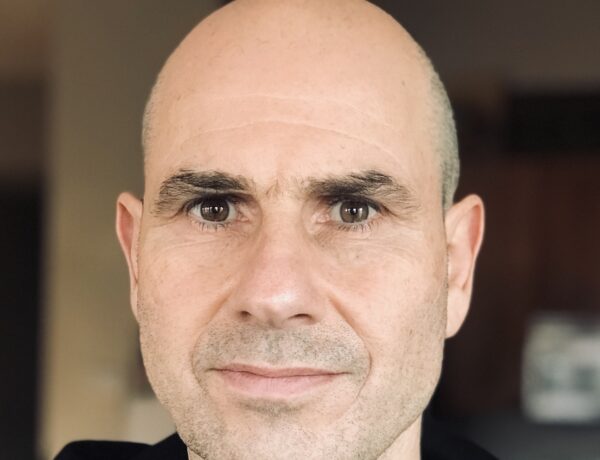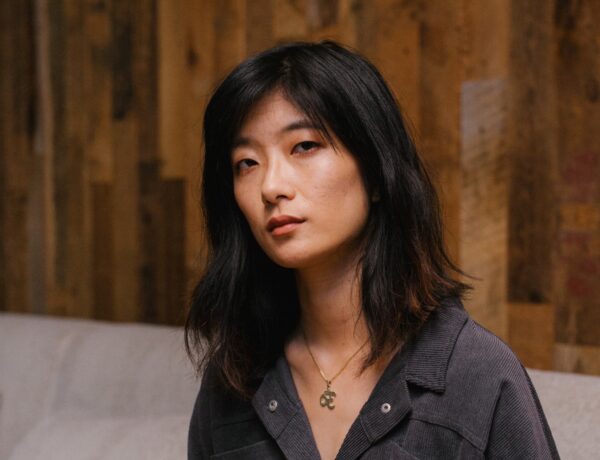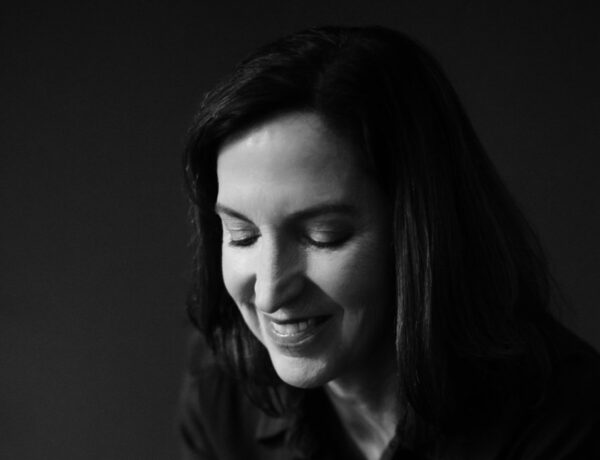Jason Nark has been a reporter at The Philadelphia Inquirer and Daily News since 2008, writing features, longform stories, and personal essays.
He won numerous first place awards from the Society for Features Journalism, including the best feature portfolio in 2018. Judges said Nark finds “beautiful stories in everyday existences and brings them to life.”
He has also won prizes from the Pennsylvania Newspaper Association in a variety of categories, including sports, as well as numerous awards from the Society of Professional Journalists in both Pennsylvania and New Jersey.
Prior to the Inquirer, Nark worked as a general assignment reporter for the Courier Post, in New Jersey, and he has contributed recent freelance pieces to National Geographic, The New York Times, Politico, Outside, and the Washington Post.
He has a bachelor’s degree from Rutgers University and a master’s from the University of Pennsylvania. He lives in New Jersey with his wife, three children, and their beloved pit bull.
Each week, we publish a new daily writing routine from a famous author. Subscribe to our newsletter so you don’t miss out!
Hi Jason, welcome to Famous Writing Routines, we’re so glad to have you here with us today! What initially drew you to journalism, and what keeps you motivated to continue your work?
I became a part-time sports journalist before I truly fell in love with the profession. I graduated with a bachelor’s degree in English and had planned to go to a MFA program but the birth of my first son propelled me into the workforce, juggling both a warehouse job, for benefits and extra money, and the journalism gig to scratch the writing itch.
I was eventually hired as a full-time news reporter and one day, after running out to a barn fire and writing a small story on it out of both curiosity and boredom, I received a lot of compliments. That story, which didn’t have a hard news lede, will always be special to me for that reason. It inspired me and taught me there’s all different types of journalism. I’m not sure I would have stuck it out without that story.
Your work often focuses on finding “beautiful stories in everyday existences and bringing them to life.” Can you tell us about a particularly memorable story that you covered, and what made it so special to you?
The greatest gift someone can give a journalist, in my opinion, is their untold story. Very often, they’re full of painful memories people would rather forget than spill out to a stranger. They often say ‘no’ to me and that’s fine. Every so often, a subject will divulge the most personal details or allow you to observe something deeply emotional and that’s a gift.
I’ve covered many stories that unfolded that way, everywhere from Auschwitz to dining room tables in Philly. A few years ago, a New Jersey woman and her young daughter traveled to the beach on Father’s Day for a special ceremony. They had brought the cremated remains of the girl’s father to the beach and planned to toss them into the ocean. They allowed me to watch.
The girl’s mother, who had a difficult relationship with the man, said she wanted some lasting record of the moment for her daughter and for the wider world to see there was a pathway to sobriety. She trusted me and I let some moments pass just between them that day: “Katie and Sadie stepped closer to the water. Katie crouched down, face to face with Sadie, and the wind and waves covered up their words, whatever a mother would say to a daughter in a moment like that.”
I’m indebted to both of them for allowing me to be there.
As someone who has written for a number of well-known publications, including The New York Times, National Geographic, and The Washington Post, can you tell us about your experience working as a freelance journalist, and what advice you would give to someone interested in pursuing a similar path?
Since I am a journalist, full-time, at the Philadelphia Inquirer, money isn’t the driving factor behind my freelance work. I’m very grateful for that and I respect how hard full-time freelancers have to hustle. When I first started doing freelance work, I was writing stories I wasn’t very interested in, pieces that were too long, for too little pay. That’s not very rewarding.
Most of my freelance work, today, focuses around my personal interests: the outdoors, nature and science, true crime. Sometimes it’s a combination of all those subjects. I also love a quirky trend or cultural piece. That’s how I wound up writing about the decline of dunk tank clowns in America.
A daily newspaper needs to churn out copy, so it was difficult for me to handle pitch rejections at first. For better or worse, I’m used to it now and that would be my advice to new freelancers: don’t let the rejection crush you. I also don’t accept silence as a ‘no’ so, much to the chagrin of some editors, I will keep reaching out until my pitch is officially rejected.
Your recent story “The Ghost in the Tent” has received a lot of attention. Can you walk us through your reporting process for this story, and what were some of the biggest challenges you faced while covering it?
That story, about the unidentified hiker known as “Mostly Harmless”, was a way for me to distract myself from a personal essay I was having trouble writing and it became an obsession for several years. I don’t know if I recommend letting a story cross over from work to obsession but I often can’t help it.
I spent hundreds of hours on it. I posted queries on hundreds of Facebook groups, often at 3 a.m. or on my honeymoon in Puerto Rico. I paid for promotions to spread his unidentified remains flier to the public and donated money to the fund used to test the man’s DNA.
I tracked down receipts for hiking boots, police reports, so-called cults, and dozens of men I thought could have been the unidentified hiker. I became an administrator for at least one Facebook group that focused on the case. The biggest challenge I had was pulling back and being practical about my time and investment in the piece.
Do you struggle to stay focused while writing? You’re not alone! That’s why Famous Writing Routines recommends Freedom – the ultimate app and website blocker for Mac, Windows, Android, iOS, and Chrome. With over 2.5 million users, Freedom helps writers stay on task and avoid distractions. Get started for free today and reclaim your productivity!
The mystery man at the center of “The Ghost in the Tent” remains unidentified, despite extensive efforts by investigators. What do you think makes this case so intriguing to people, and what do you hope readers take away from the story?
The hiker known as Mostly Harmless was eventually identified as a man named Vance Rodriguez. I wrote about him in a follow up to my original piece. His identity was later confirmed by police through DNA testing. The “hook” of the case was simple: here was a man who had met dozens of people on a southbound hike over the course of the year and had his picture taken over a dozen times.
After he was found dead in a tent, with no ID, phone or wallet, those photos should have solved the case in days. He remained unidentified for years, however, despite those pictures circulating all over the Internet by the media, Internet web sleuths and police. Why had no one reported him missing? People used that blank slate to fill in all sorts of guesses: he was kind, they thought, or handsome.
I did the same, believing he was some free spirit who eschewed technology for some higher purpose. It turned out, in the end, that he was a troubled man who had burned all his bridges. His hike was a last resort, a long, drawn out suicide, perhaps. That was hard for a lot of people to accept in the end and it made my final weeks on the story difficult.
Can you tell us about your writing routine? What does a typical day look like for you?
For the newspaper, I’m either out reporting far afield, sometimes deep in the Pennsylvania woods, or I’m writing. That’s the ideal anyway and I get anxious when it slows down. Editors will find something for you to write if you’re not churning out your own work.
I’ve found, as long as you say “yes” to some of those assignments from time to time, most editors will give you the time you need to find your own. Freelance writing has its own pace and I spend a lot more time trying to find stories and formulate pitches on weekends or nights. It’s all done in any free time I have and God bless my wife for that.
As a longtime writer for newspapers, I’m not accustomed to pitching, or doing a whole of reporting just for the pitch, but it’s important and trying to nail that down clearly is about 60 percent of the process for me.
If you could have a conversation with any author throughout history about their writing routine and creative process, who would that person be?
The pieces that have inspired me the most are all long works of creative nonfiction, authors who’ve found ways to be both informative and lyrical with their work. That’s the goal. I gravitate to nature writing. The one that comes to mind, because I recently spent a year reading and re-reading it for a project, is Norman Maclean’s Young Men and Fire. Maclean has a small body of work but this book, a beautiful work of investigative journalism into a deadly wildfire and his seminal A River Runs Through It are two of my favorites.
A profile of Maclean, written by former Philadelphia Daily News columnist Peter Dexter, is as good as anything the author himself wrote. I would have loved to talk to Maclean about his methods or sat in one of his classes at the University of Chicago. He didn’t write until later in life and that interests me. I’m also a huge fan of John McPhee, who lives about 40 miles north of me. McPhee’s deeply organized, almost scientific approach to writing is anathema to me, though. I’m a bit messier.
I’d love to know about the books you’re reading at the moment. What have been some of your favorite recent reads?
The books I’ve read most recently were research materials for a long essay I published in the climbing magazine called The Alpinist. It’s been the most challenging piece I’ve ever worked on. The books all centered on mountaineering, specifically the early history of the sport in the United States as well specific books about the Sierra Nevada mountains of California. One of them was Missing in the Minarets: The Search for Walter A. Starr Jr. I read Maclean’s Young Men and Fire as inspiration for that essay several times because he cared so much about the right information, but also cared about the writing. I received copies of Cormac McCarthy’s two latest books for Christmas and I’ll be reading them now that the essay was published after 8 years of starting and giving up on it.
What does your current writing workspace look like?
As much as I’d love to have a classic writing area, an attic desk surrounded by bookshelves and photos and trinkets, I do most of my writing on dining room tables. I’ve kept this tradition going through about four homes I’ve lived in over the last 20 years. Maybe it’s the clean, open space that keeps me focused, or the access to the coffee maker, but it works for me, day or night.

Affiliate disclaimer: Some links on this website are affiliate links. We may earn a small commission if you make a purchase through these links, but only promote products we truly believe in. We disclose affiliate links and give honest reviews.



No Comments